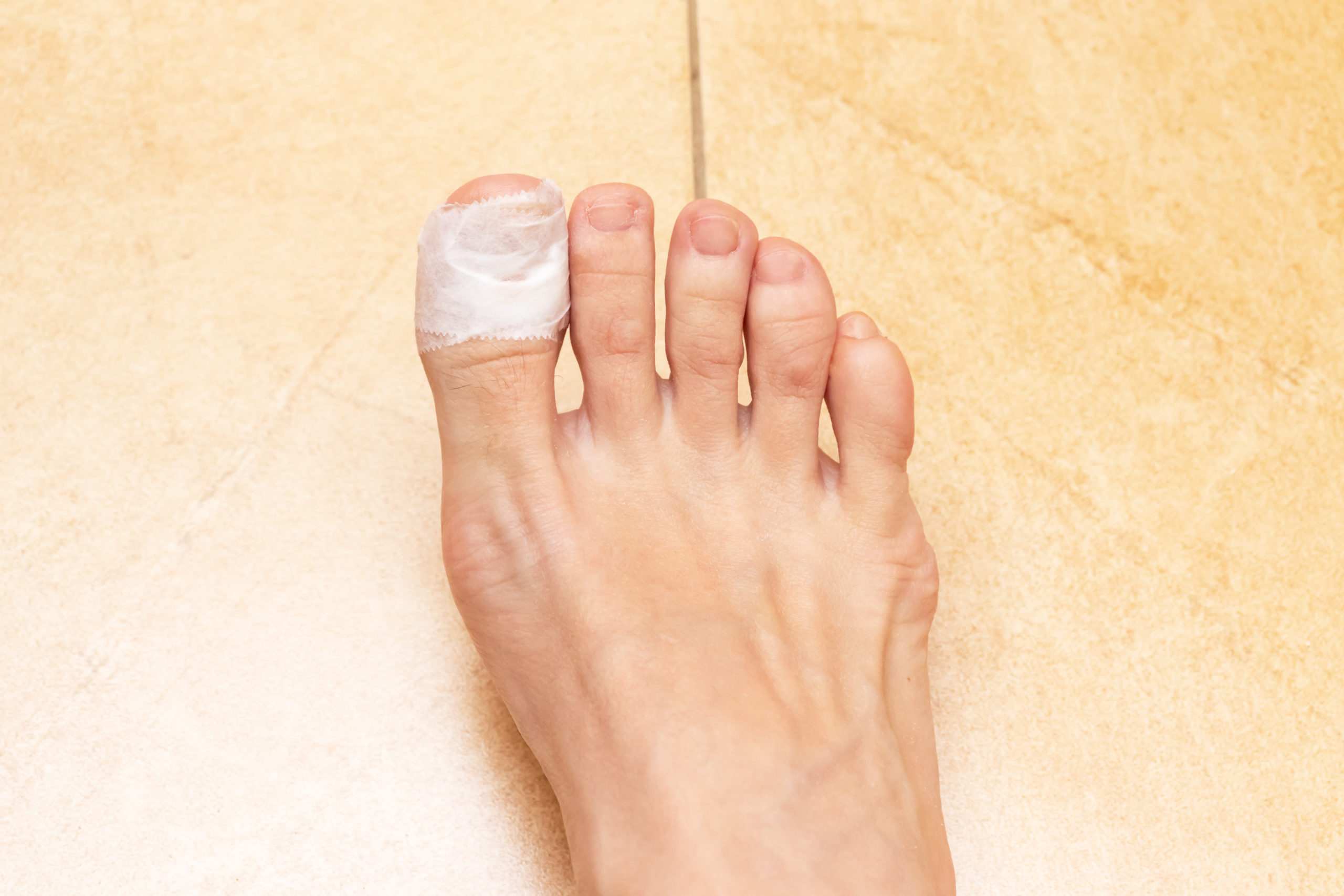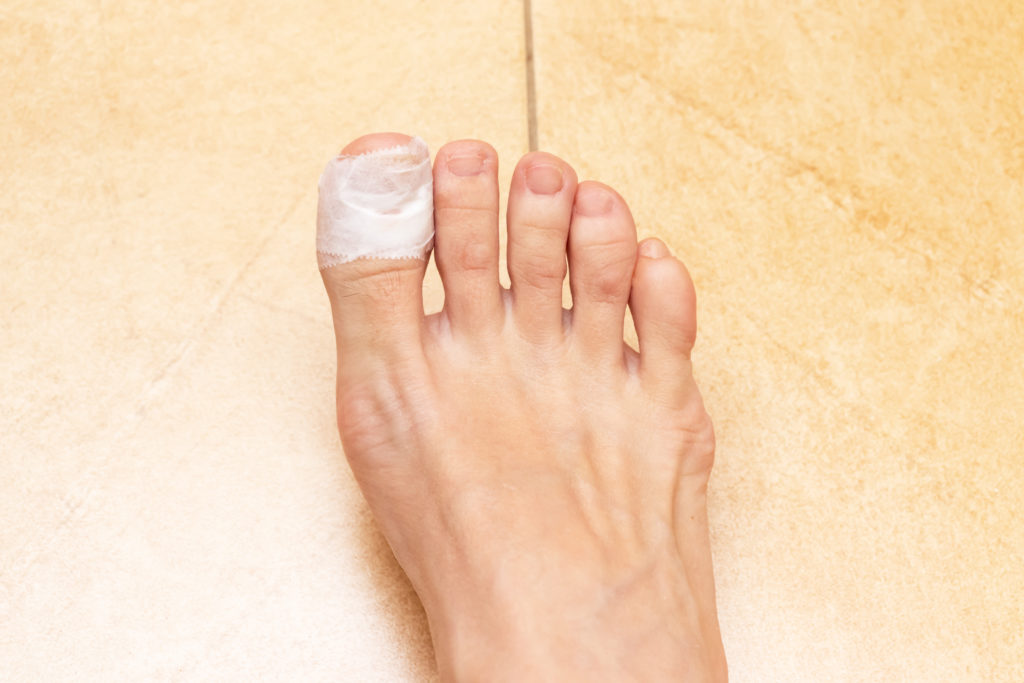

So you’ve lost – or are well on the way to losing your toenail. It’s likely your big toe, though any toenail can come loose, and it likely pops to the forefront of your mind anytime you put on or take off socks and shoes because you’re worried that whatever is left may catch on the fabric and be painfully ripped off. Sound familiar?
As loose toenails bring with them a myriad of questions including:
- Will my nail grow back?
- Will my nail look normal?
- Why has it fallen off?
- Why does my nail look so white now?
… your My FootDr podiatry team has given you the low-down on losing toenails, why it happens, and what you can expect going forwards.
Why Toenails Fall Off
First thing’s first. The #1 cause for nails falling off or becoming loose is trauma. This may look like dropping something heavy on your toenail, stubbing your toe, your big dog jumping on your toe – you name it. If you’re a skier or snowboarder, you might have a loose nail regularly from tight (but necessary) boots on the slopes. Sometimes, it can be as simple as not trimming a long toenail and spending a whole day on your feet, with the nail constantly pressing firmly against the end of the shoe.
Regardless of the cause, the end result is the same: damage to the nail and likely bleeding beneath the nail too. If your nails are painted then you may not realise, but many people will develop a black/purple spot beneath their nail – or across the entire nail. This is dried blood beneath your toenail. Unless it’s at the very tip of the nail, it’s likely that you won’t be able to clean the area until your nail grows out. Thankfully, if you can’t reach the dried blood to clean it, neither can any bacteria or other nasties, so in most cases, you don’t need to worry about infection or anything sinister.
What the dried blood does do is fill the space between the nail itself and your nail bed, otherwise known as the pink skin beneath the nail. As the two layers are now separated, there is nothing holding the skin to the nail in that area any longer. Hence, it becomes much easier for toenails to fall off – and eventually, as the nails continue to grow, they most likely will as they’re no longer ‘attached’ like they used to be.
Other causes of nails becoming loose and detaching can include:
- Fungal nail infections
- Nail thickening (onychauxis)
- Psoriasis
- As a side effect of medical treatments like chemotherapy
My Nail Has Been Loose For A While. When Will It Fall Off?
This really depends on the cause for it becoming loose, how severe it is, and where the damage to the nail originally occurred. For example, if you had some bleeding right at the base of the nail, it may take weeks or months for it to fall off – if it does at all. But if you had severe damage and your entire nail is currently black, it may only take days or weeks.
Will The Nail Grow Back?
In the majority of people we see, yes they do – but here’s what you should know. Anytime we grow new nail, it is produced by nail-growing cells in the nail root, found deep beyond our cuticles. They’re made of a protein called keratin, and it’s a constant process of the new nail pushing out the older nail at the tips, and hence our nails growing longer.
As long as there’s nothing interfering with the nail-growing cells and this process, then you can and will grow new nail. But, if you dropped a bowling ball onto your foot or burnt your toes and have subsequently damaged the cells to the point that they can no longer grow new nail, then it may not grow back.
Interestingly, some people choose to have their toenails completely removed and the nail-growing cells destroyed using an acidic substance if they have longstanding problems with their nails and decide they no longer wish to put up with the hassle and discomfort. So yes, it’s very possible for your toes to no longer grow nail, though we don’t see this occurring naturally too often.
Will The New Nail Look Normal?
This is quite similar to the previous question. As long as the nail-growing cells are healthy and your body is producing everything it needs to grow the nail, then it’ll grow back and very likely have a normal appearance. If there’s a problem with the toe, the nail growing cells have been partially damaged, or something like a fungal nail infection or other problem is present, then the nail may grow back distorted.
It’s really a case-by-case situation and it depends very much on your personal history. But if you’ve just stubbed your toe or worn tight shoes or sports boots, then it’s likely it’ll grow back normal.
Why is part of my nail so white now, instead of pink?
The reason our nails have that nice pink colour is because of the tiny blood vessels that feed the nail bed directly beneath your nail. When the nail exceeds the nail bed at the tips of the nail, it appears white. The same is true if part of your nail is now white – the nail has separated from the nail bed, and so now appears white instead of pink.
Be careful if this is the case – dirt and bacteria can get trapped in this newly formed ‘cave’ between the nail and nail bed, putting you at risk of infection. To help, you can wash and dry thoroughly in this area or cut the nail back accordingly, being careful not to go too far.
Worried About Your Nail?
If you’re worried about your toenails, something doesn’t look or feel right, or you’re experiencing any unexpected pain or discomfort, your local My FootDr podiatrists are here to help.
If your toenail is loose but hasn’t fallen off yet, here are a few tips on how to look after the nail:
- Try to keep the edges of the nail as smooth as possible using a nail file to stop them catching on the edges of shoes and socks
- Keep a simple dressing over the toe to reduce irritation to the area
- Avoid tight, narrow footwear that put pressure on the nail
- If there’s a risk of infection, monitor your nail closely, apply antiseptic as needed, and use warm salty water to help reduce the infection risk
- If your nail is painful, bleeding, or there is any other cause for concern, always see your podiatrist immediately. Especially if you have medical conditions that affect your circulation or increase your infection risk like diabetes
Book your appointment online here or call us on 1800 FOOTDR


